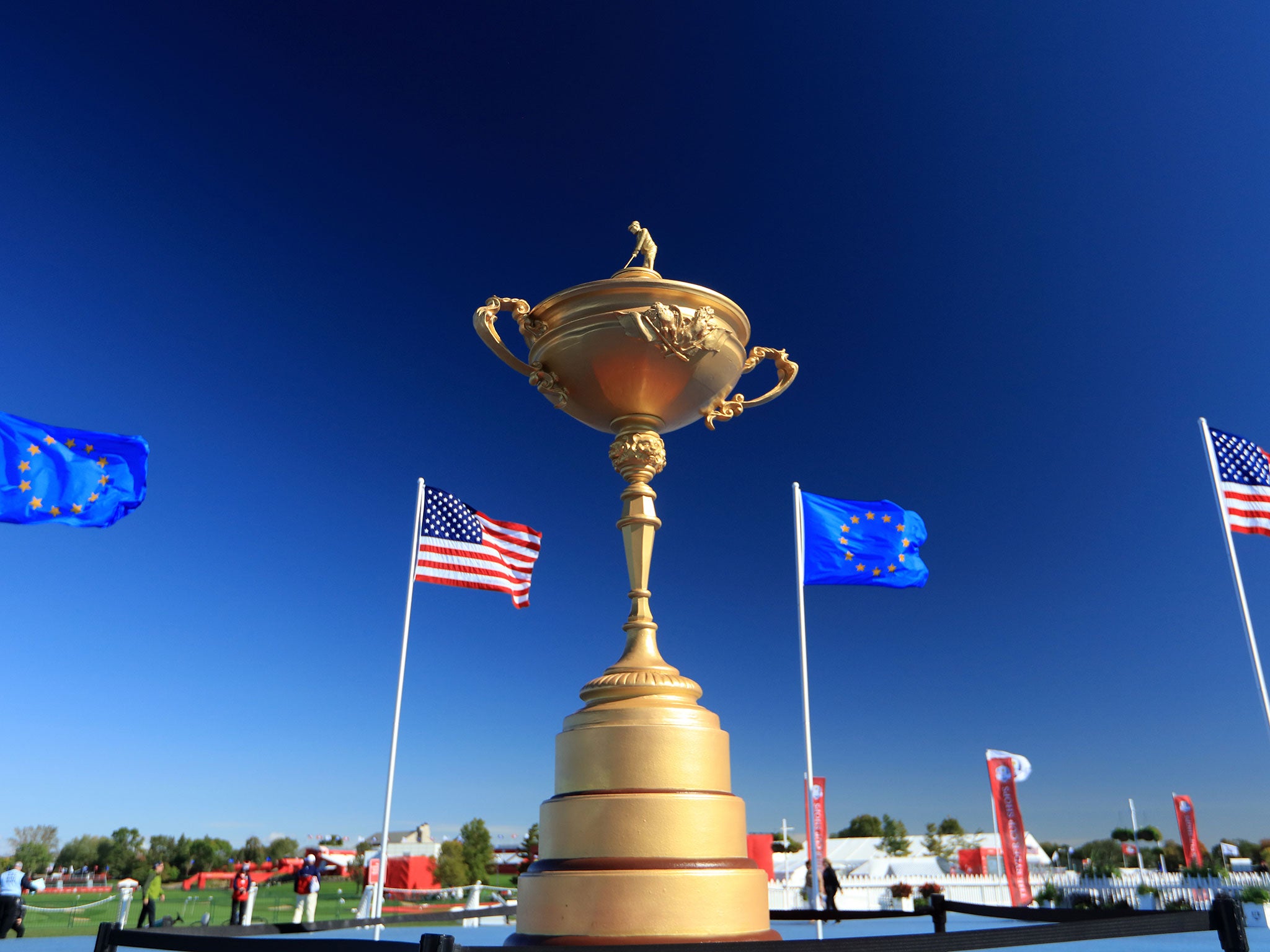The Independent's journalism is supported by our readers. When you purchase through links on our site, we may earn commission.
Ryder Cup 2016: Eight things you didn't know about Hazeltine golf course
We take a look at the American golf course hosting this year's Ryder Cup

Your support helps us to tell the story
From reproductive rights to climate change to Big Tech, The Independent is on the ground when the story is developing. Whether it's investigating the financials of Elon Musk's pro-Trump PAC or producing our latest documentary, 'The A Word', which shines a light on the American women fighting for reproductive rights, we know how important it is to parse out the facts from the messaging.
At such a critical moment in US history, we need reporters on the ground. Your donation allows us to keep sending journalists to speak to both sides of the story.
The Independent is trusted by Americans across the entire political spectrum. And unlike many other quality news outlets, we choose not to lock Americans out of our reporting and analysis with paywalls. We believe quality journalism should be available to everyone, paid for by those who can afford it.
Your support makes all the difference.The Ryder Cup gets underway on September 30 as the best golfers from Europe and America prepare to battle it out for one of the game’s most prestigious prizes.
Europe are looking for their fourth successive win in the tournament, having held the cup since 2010 when they beat America by just the one point at Celtic Manor Resort.
The Europeans followed up this victory two years later at Medinah as they pulled off a stunning final day fight back to lift the cup under the captaincy of José María Olazábal.
Captain Darren Clarke will be hoping his team can emulate the success of that day as the competition returns to American soil for the first time since the ‘Miracle of Medinah’.
Taking place at the Hazeltine Golf Club, this year’s cup will be one of the most fiercely contested tournaments in recent years as Team USA attempts to avenge the indignity of Medinah and re-establish American dominance within the sport.
The course itself is welcoming the Ryder Cup for the first time in its history.
With not long to go now until one of golf’s biggest competitions gets going, we take a look at the impressive Hazeltine course ahead of Friday’s tee-off:
Overview
The course, a par 71, is situated in Chaska, Minnesota, and opened in 1962. It was designed by Robert Trent Jones and originally named “The Executive Golf Club”. It was later changed to Hazeltine – in honour of the adjoining Lake Hazeltine. Nine of the holes on the course have water hazards and the last major played at the course was the 2009 PGA Championship.
Bring your driver
At more than 7,600 yards long, Hazeltine will suit the likes of Dustin Johnson and Rory McIlroy who have both averaged 300 yards-plus off the tee in 2016. Three par 5s over 600 yards will give the big hitters an advantage.
The 16th hole
Johnny Miller, a two-time major winner, said that the 16th, the course’s “signature hole”, was “The hardest par four I ever played”. The tee shot must carry 220 yards over Hazeltine Lake while the green itself is a raised peninsula which falls off on all sides. Because of the amendments that have been made to the course’s format, the 16th will serve as the 7th during this year’s Ryder Cup.
Europe vs USA
The last major tournament held at the Hazeltine, the 2009 PGA Championship, was won by neither an American, nor a European. Eventual victor Y.E Yang was the first and only Asian-born to claim victory in the major championship to date.

Robert Trent Jones
The Hazeltine course architect boasts an impressive CV, having also designed courses at Spyglass Hill and Firestone Country Club, in addition to influencing re-designs at Baltusrol, Congressional and most notably Augusta National.
Ryder Cup reshuffle
Owing to the nature of the crowds at the Ryder Cup, which sees large numbers following only a few games, the course has been re-routed specifically. Starting at the 1st the players will finish the 4th hole before switching to the 14th tee, playing the five-hole stretch including the traditional finishing hole, the 18th. The players then work through holes 10-13 before finishing with holes 5-9.
Breaking 80
When Hazeltine hosted the US Open in 1970, nearly half of the field failed to break 80 in the first round. The course received much negative press as a result. After his round on the Friday, Dave Hill said that the only thing Hazeltine was missing was "80 acres of corn and a few cows." The course received much negative press in the wake of the 1970 tournament and a number of changes were subsequently introduced.
Tiger Trap
Testament to the difficulty of the course is the fact that even the great Tiger Woods could not overcome it. At the 2002 PGA Championship, Tiger Woods lost out to Rich Beem by one stroke, despite hitting “the most flushed golf shot (I) ever hit” (a 3 iron from a fairway bunker on the 18th). Seven years later, Tiger lead throughout in the same competition but failed to capitalise on a three-stroke advantage on the final day as he handed Yang Yong-eun a historic victory.

Pedigree
On hosting the 2016 Ryder Cup, Hazeltine becomes only the second course (following Pinehurst), to have hosted the US Open, PGA Championship, US Women’s Open, US Amateur, and now the Ryder Cup. The last European to win a professional major at the course was England’s Tony Jacklin back in 1970 when he beat Dave Hill by seven strokes to secure victory.
Inspired by the Ryder Cup to take up golf? Get yourself kitted out at online retailer www.golfbidder.co.uk
Join our commenting forum
Join thought-provoking conversations, follow other Independent readers and see their replies
Comments